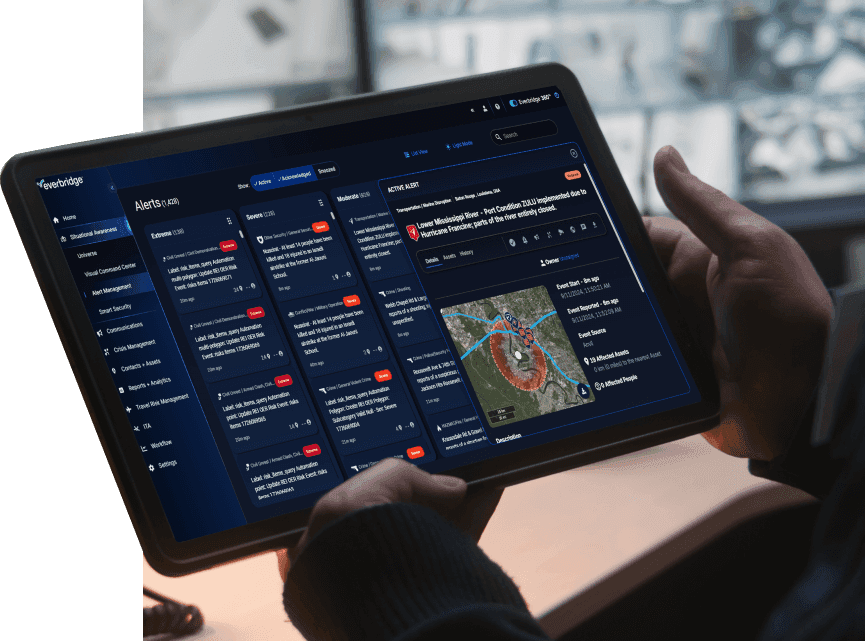Organizations with a global reach often require employees to travel near and far. Now more than ever, businesses have a duty of care to ensure the safety, well-being, and security of their workforce, no matter the destination. To ensure traveling employees are kept safe, organizations must prepare their people for potential risks and keep them informed throughout their journey, providing further assistance and care if needed. Organizations should also be asking pressing questions to any provider in detail about their solution and the simplicity and reliability of its functionality.
The importance of a successful travel risk management (TRM) solution
With travel risks constantly evolving, keeping travelers safe has become more complicated. Now, to be a resilient organization and maintain compliance with duty of care standards, businesses must have a travel risk management solution capable of achieving a 360-degree view of traveler risk while adapting to changing circumstances.
Pre-trip
The groundwork for any successful TRM solution starts at the pre-trip level. Organizations must confirm that the proper policies and procedures are in place before traveling begins. Once confirmed, organizations should ensure they have clear and accurate real-time data of ongoing or potential travel risks, and a plan to deal with them if they unfold.
Active-trip
During an active trip, organizations must have the ability to locate, communicate, and support business travelers should any potential risks emerge or develop. The successful implementation of a pre-trip travel risk management strategy is key to success in the active trip stage, where the technical prowess of a TRM solution can mean the difference between encountering and avoiding danger.
Post-trip
Once a trip is completed, the work isn’t finished. A successful TRM solution should measure areas of success and improvement, allowing organizations to adapt and scale as needed to current or developing threats. With post-trip data, organizations can better gauge what’s working while maintaining compliance levels.
“With the reality of the new hybrid workforce and upswing in business travel, advanced Travel Risk Management features and services now available through Everbridge become even more important for fulfilling duty of care and building enterprise resilience,” said Julie Deppe, Director of Product Management at Everbridge. “Customers seek one single pane of glass to view and manage critical events, mass notification and travel risk and assistance services. Everbridge uniquely addresses this pressing customer need.”
Questions to ask before purchasing a TRM solution
Beyond the pre-trip, active trip, and post-trip components, what should you specifically be looking for when comparing TRM solutions? Our recent blog explored the most important questions to ask of any supplier before selecting their system. Some of the high-level questions include:
- Does the system provide the full functional capability that you require?
- Is it built on a stable technology platform that you can depend on?
- Is the system maintained and developed in-house by the provider?
- Is it intuitive and will it encourage engagement and compliance throughout your organization?
- Is it truly future-proof? If your requirements change, can the system evolve with you?
- How safe is your data?
In addition, there are deeper dive questions also addressed in the blog which put the onus on the provider to give important detail regarding the intricacies of their solution that could set it apart from the competition.
Everbridge for travel risk management
Everbridge has become even more committed to helping organizations fulfill their duty of care by enhancing enterprise resilience. The realization of this commitment is best represented in the newfound (and full) integration of Everbridge’s Travel Risk Management (TRM) and Critical Event Management (CEM) solution.
By combining TRM and CEM into a single SaaS solution, Everbridge helps businesses, healthcare, and government organizations improve functionality by increasing the unification of travel data, pre-trip advisories, granular automated traveler alerting, and dynamic locating. These capabilities, combined with global medical and security assistance through a 24/7 response center, help organizations create new standards that meet or exceed recently published ISO 31030 guidance.

